What do you think is more beautiful than gorgeous St. Peter’s Basilica in Rome or the Louvre Museum in Paris? I’ll bet you are thinking about man-made architectural masterpieces. However, the well-known naturalist and botanist Sir Joseph Banks was of different mind. He was a pathbreaker to a small uninhabited land lying on the western coast of Scotland and called the Isle of Staffa or “a pillar island” in Old Norse. It is an island of the Inner Hebrides and it is here where the amazingly scenic sea cavern excelling in its beauty all these masterpieces is located. They can hardly be compared, of course – that’s a matter of taste. But the cave is really stunning and is certainly a masterpiece of natural architecture. Besides, it is in the top ten most beautiful caves in the world. It is called Fingal’s Cave or the Singing Cave.
What makes it so unique? The cave is located in a cliff formed of giant basalt columns similar to those we saw on the Giant’s Causeway in Northern Ireland. Although the distance between these two sights is quite long, they both appear to be made by the same “architect”. The cave is about 75 m long and 30 m high. However the most incredible thing here is the dome-shaped cave roof. Waves crash over walls and produce music sounds. Old Scots named it “the melodious cave”. Famous composer Felix Mendelssohn visited the cave in 1829. The sounds he heard there inspired him to write an overture, The Hebrides, also known as Fingal’s Cave Overture. This music made both the island and the cave famous– the overture attracted many famous writers and public figures, such as Jules Verne, Sir Walter Scott, and Robert Louis Stevenson. Even Queen Victoria visited the island to see this fantastic place.
The Isle of Staffa is quite small, 0.33 km in total. The island lies is a few dozen kilometres west from the Isle of Mull which became our starting point to Fingal’s Cave. There are many ways to get Staffa; however all of them depend on carriers’ schedule – there is no direct regular ferry line to the island. So, start with choosing a carrier. When planning a journey to Staffa, keep three things in mind: weather, time, and your money. Time was our number one priority, so we chose the most difficult way: we monitored all offers we could find in the Internet and decided to go our own way. The point is that most carriers make the Isle of Staffa a part of their excursion tours to Staffa, Mull and Iona. They offer a full-day tour to the three islands starting in the town of Oban and lasting 9 to 11 hours, a full day. The tours do not include meals and cost GBP 60 per person. This option did not suit us – we did not have so much time for exploring the island. Besides, we weren’t quite so keen to visit other two islands. That’s why we found a perfect option for us: we got the Isle of Mull on our own by ferry and joined the tour at its starting point – the Isle of Staffa. With this option we could see what we were interested in without a need to pay extra money (the excursion costed GBP 30 per person) and lasted 4 hours at most. Sounded perfect! Be very attentive to freak weather which often leads here to cancelation of all services to islands. We had to delay our trip for a day because of storm which cancelled all ferry tours. However, when we started off our journey, the nature apologized for its bad behaviour and welcomed us with wonderful weather.
Our ferry to the Isle of Mull departed very early in the morning, and the weather seemed to be far from perfect. A trip lasted just an hour and we found ourselves on the island sooner than we thought. We had two hours before our boat to the Isle of Staffa and decided to visit the island’s main town – Tobermory which is a home to the only whisky distillery on the island. There was nothing to do in the town except but to admire the quay with lovely houses and drink coffee in a local café. We could not resist tasting local whisky and bought it as a ‘takeaway’.
The roads on the island have one line only for traffic in both directions. To pass a vehicle away other vehicles use special areas, lays-by located every 400 m. This was incredibly inconvenient especially when we were in a hurry and had to wait until a tractor or a big bus got its point of destination or pulled into a lay-by to give us way.
Here, on the isle of Mull, I have seen road signs with animals I had never seen before – ducks and animals resembling otters and sea apes.
We did not take into account the difficulties with single-line traffic and were very nearly to miss our boat to the Isle of Staffa.
The boat was full of people wishing to see the legendary cave. The morning rain stopped once we got aboard as if by magic, and the sun welcomed us all the day, sometimes together with a rainbow. The trip lasted about 40 minutes one way. We preferred to stand on deck and admire the amazing sea landscapes.
As we approached, the boat stopped for a few minutes so we could see the island from outside. Our eye was drawn by a strange shoreline making Staffa differ from all other islands. The cave looks very mysterious even from a distance. We recalled a legend about the giant we made acquaintance on the Giant’s Causeway in Northern Ireland. His name was Finn Gall, a notorious troublemaker always willing to pick a fight with Finn McCool, one great Irish giant. How the story of their fight ended, read here. These two places do look very similar, though the distance is long, as if the giants did want to designate their domains and put giant stone pillars into the sea bottom. Basalt rocks are very high and their top is covered with grass as if the island has a hat. In addition, Staffa is inclined to the right a little, so horizon is tilted on pictures.
When we left the boat, we got strict instructions to come back in 45 minutes and started exploring the island.
Special hand railings run to the cave to prevent falling to water.
Those who are not scared of heights can easily enter the cave. We saw a man who was so scared of walking so he could not drop off handrails. I could not set myself for the music inside the cave and did not hear the melody of waves in the dome-like cave roof. We were lucky to have a very nice weather, so we could sit on stones near the cave and enjoy peaceful serenity one could feel when a dream comes true – we have just seen this wonder of nature.
We went upstairs to see the island. Staffa is uninhabited, though the history tells that three red deer lived there in 1800. Later a goat herd was brought to the island but goats apparently were not fond of island’s harsh weather and were taken away. Even a few sheep known as the most unpretentious animals refused to live there. Today the island is a home for sea parrots and sea gulls.
After the time has lapsed, we sailed off. The boat stopped again in front of the island, so we could say goodbye to this amazing wonder not made by hand. On our way back we passed a tiny island Iona, Mull’s neighbour. It is just 8 sq. km and is a home to 177 people only. However a tiny island is known for the building considered very significant for the history of Scotland – the Abbey founded by St. Columba in 563. Saint Columba is as important for Scotland as Saint Patrick for Ireland. He helped spreading Christianity in Scotland and was brave enough to baptize local tribes – the Picts. Because of his hard work, the Abbey became the centre for the spread of Christianity in Scotland, though it is remote from the mainland. He died in 597 and was buried on the island. Iona subsequently became a grave site for kings from Scotland, Ireland, and Norway. The most famous king buried here is Macbeth, the main character of the Shakespeare’s play. We admired the island and the abbey from the water and thought how hard the life was for people on such a remote land.
We enjoyed our journey to the island very much. This trip left a very warm feeling and made us understand how diverse and amazingly beautiful Scotland is.

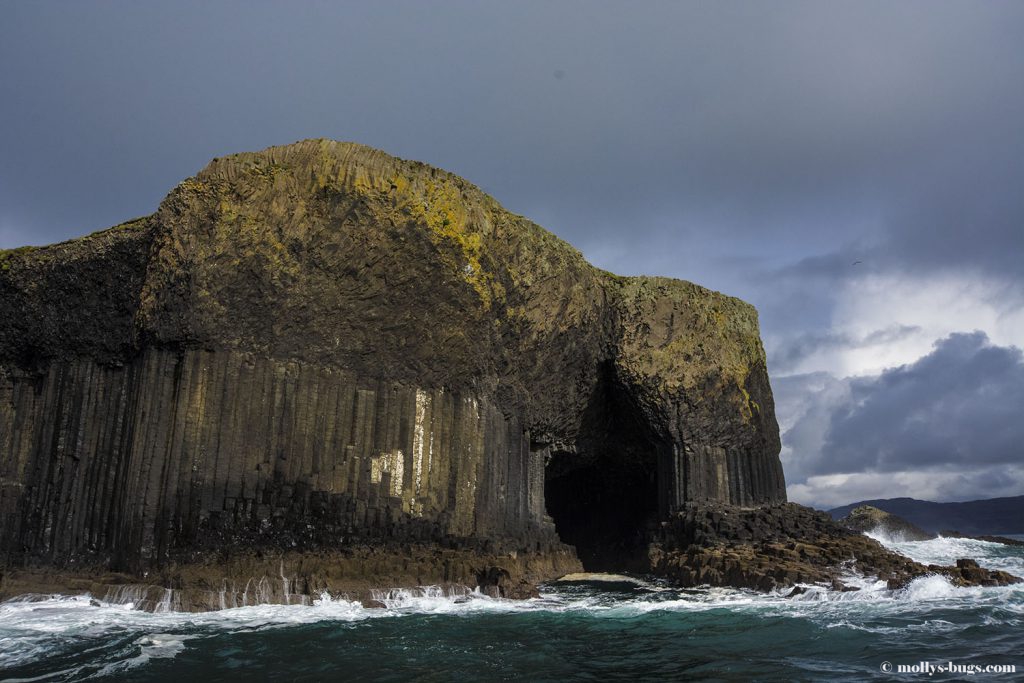
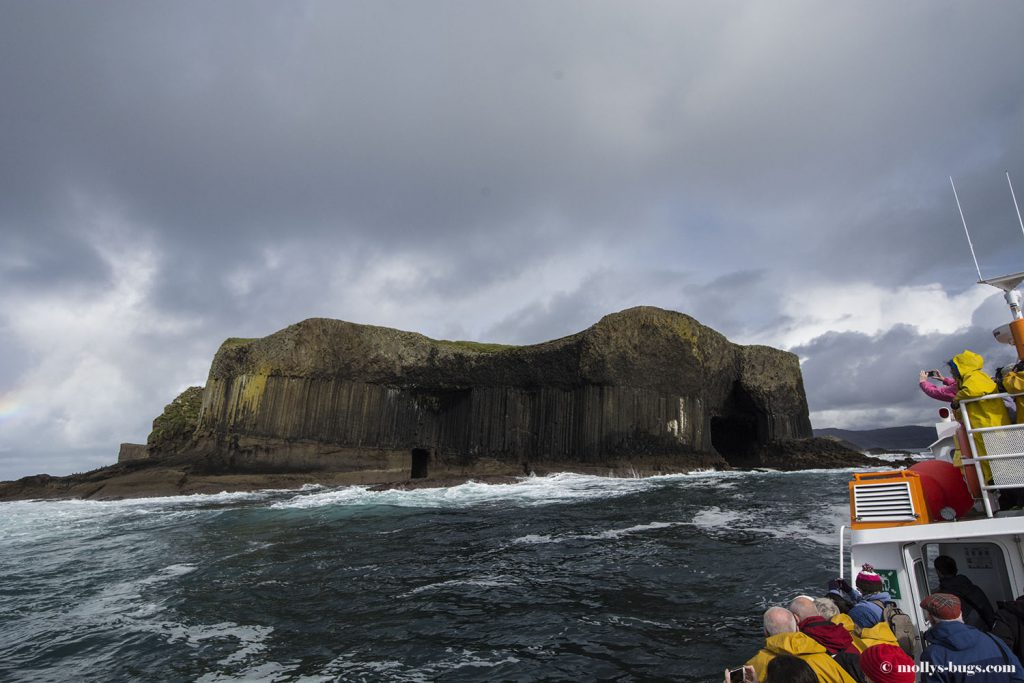
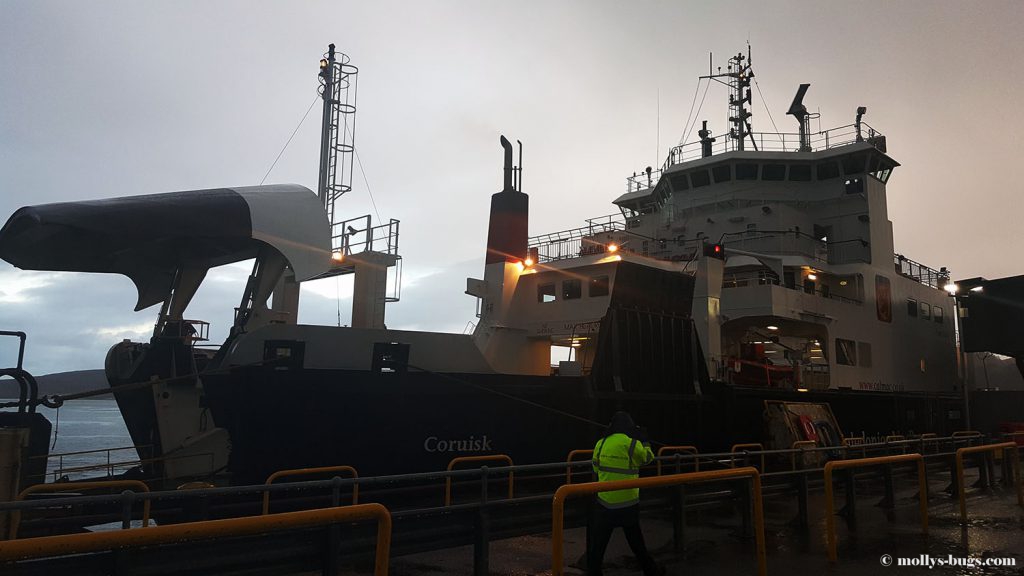
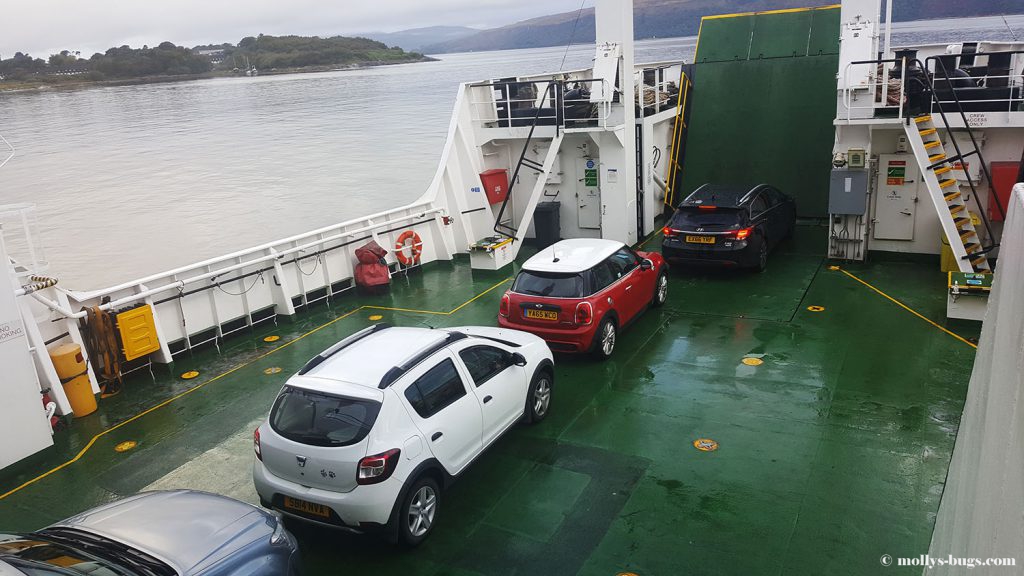
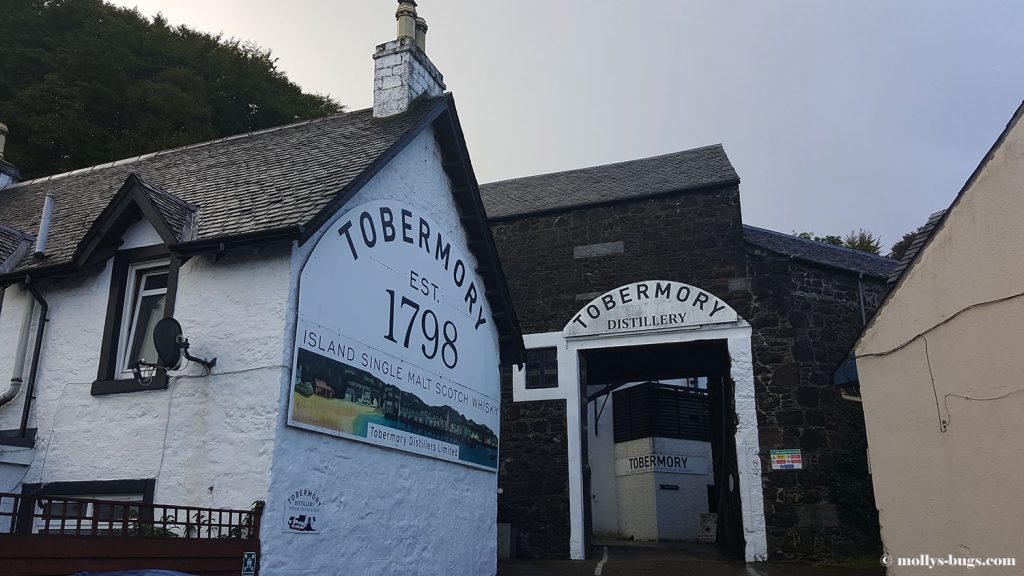
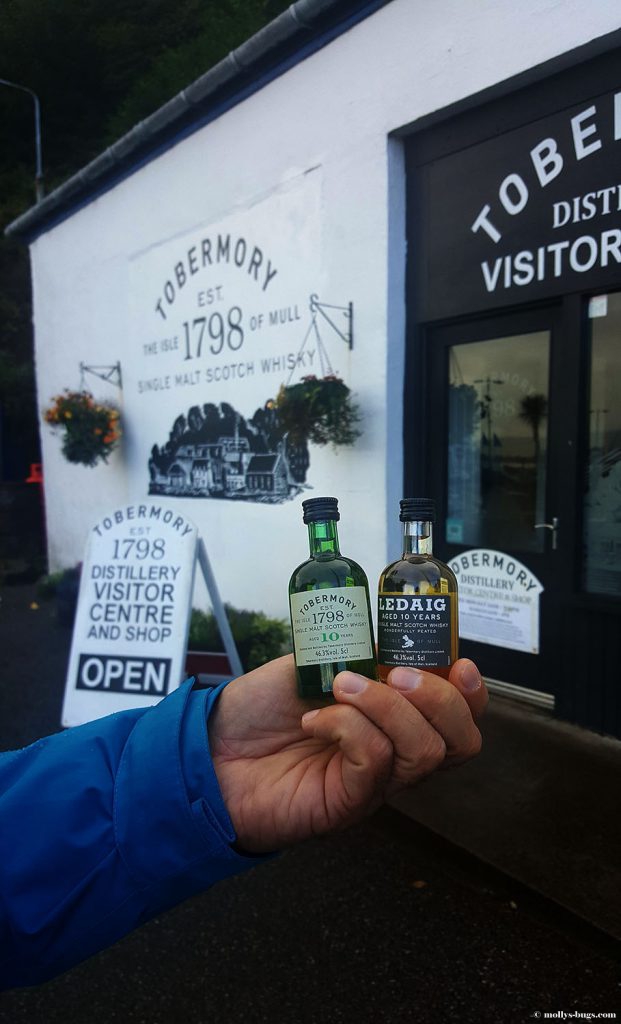
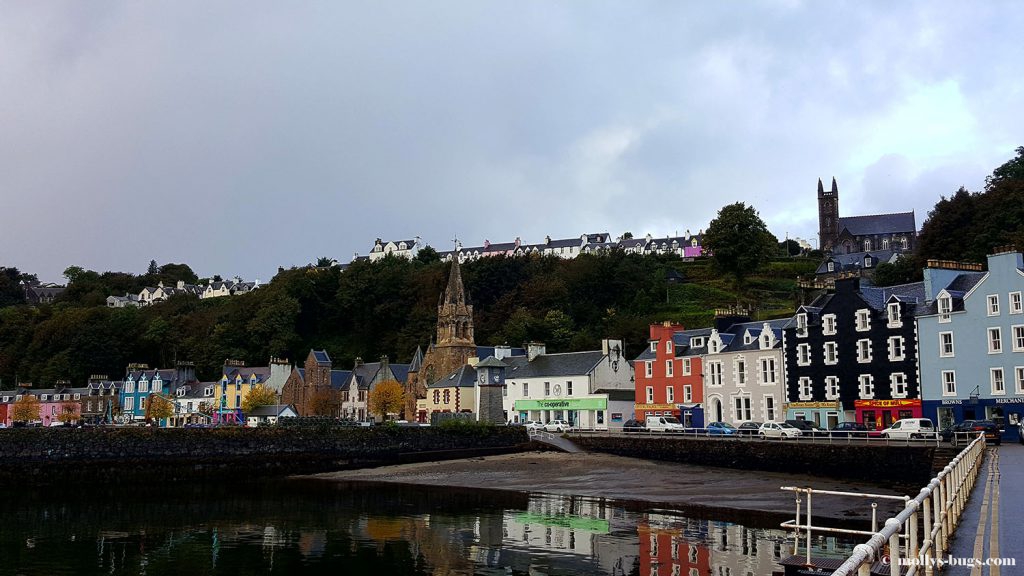
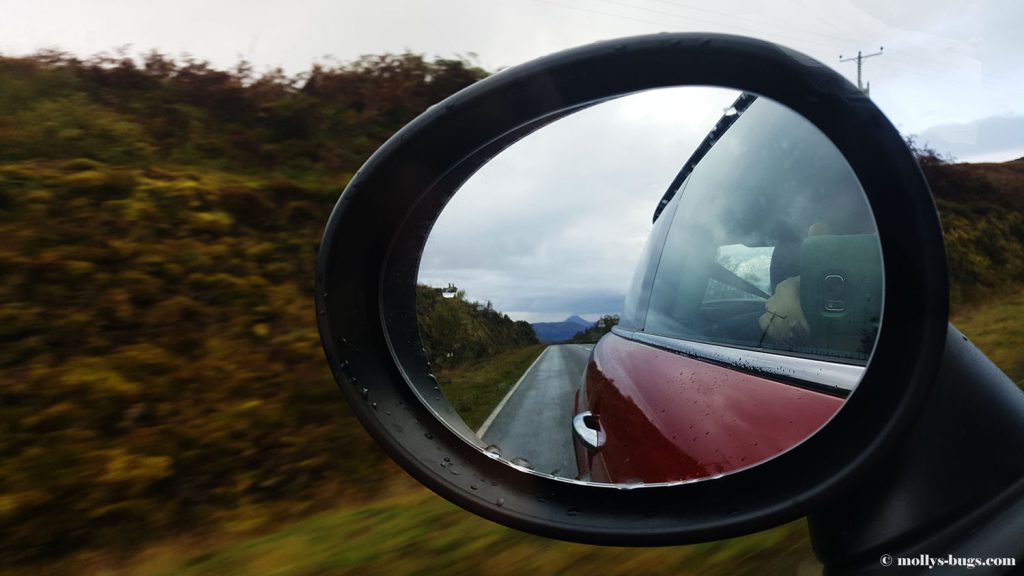
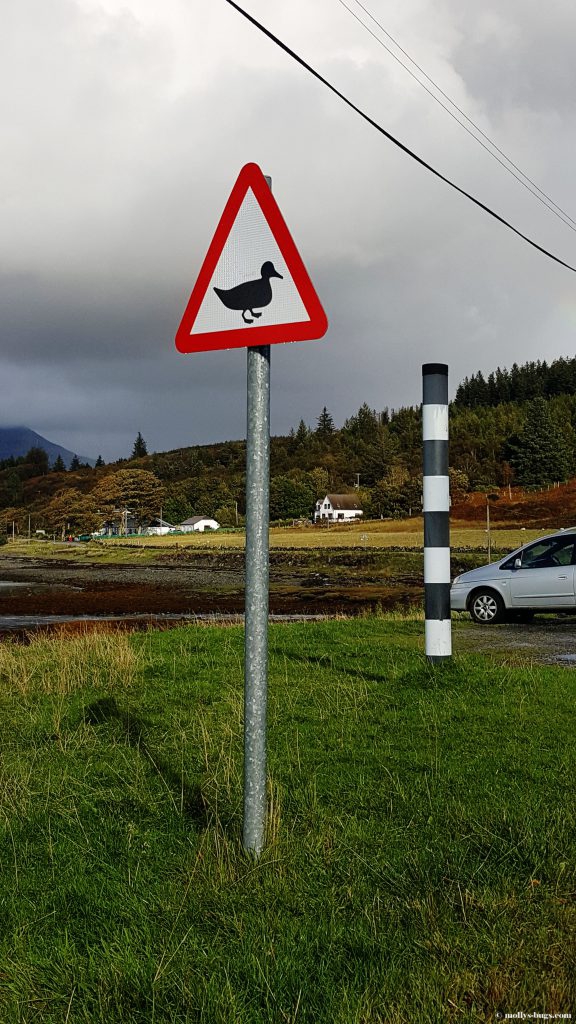
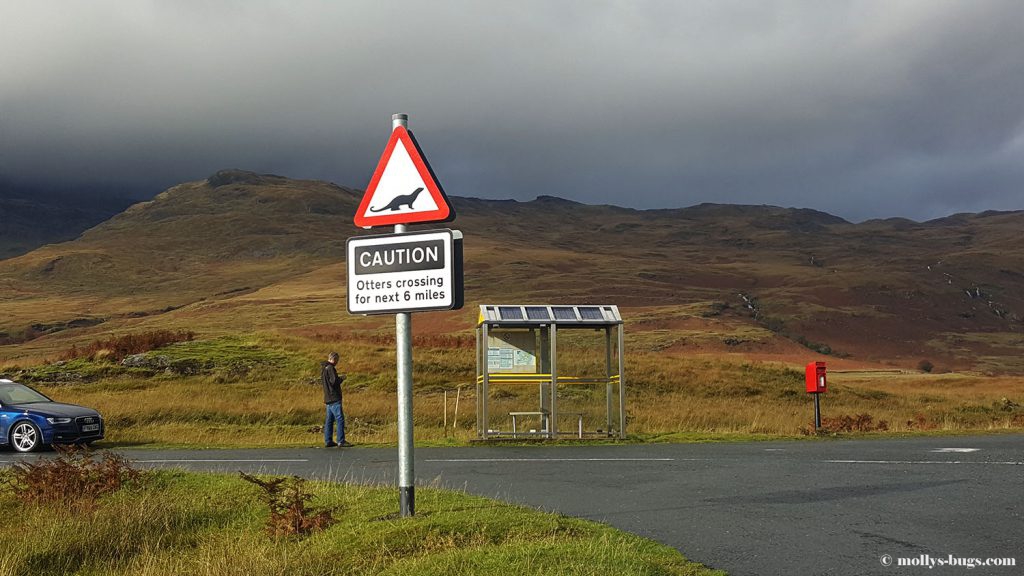
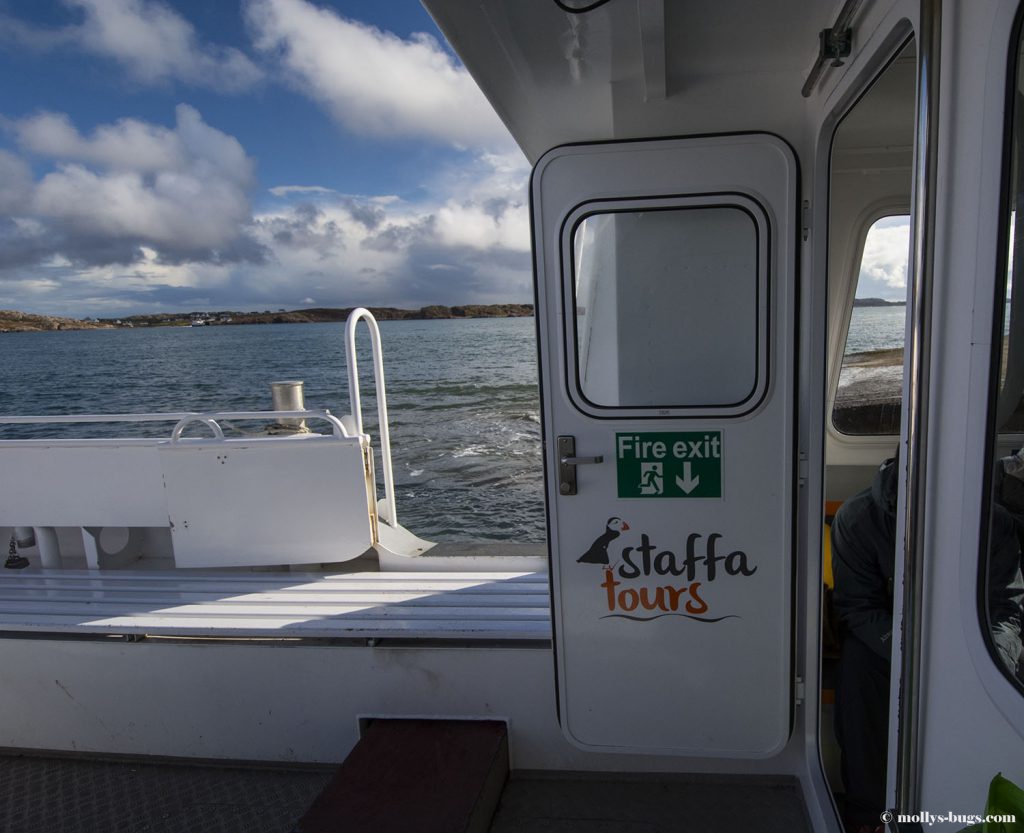
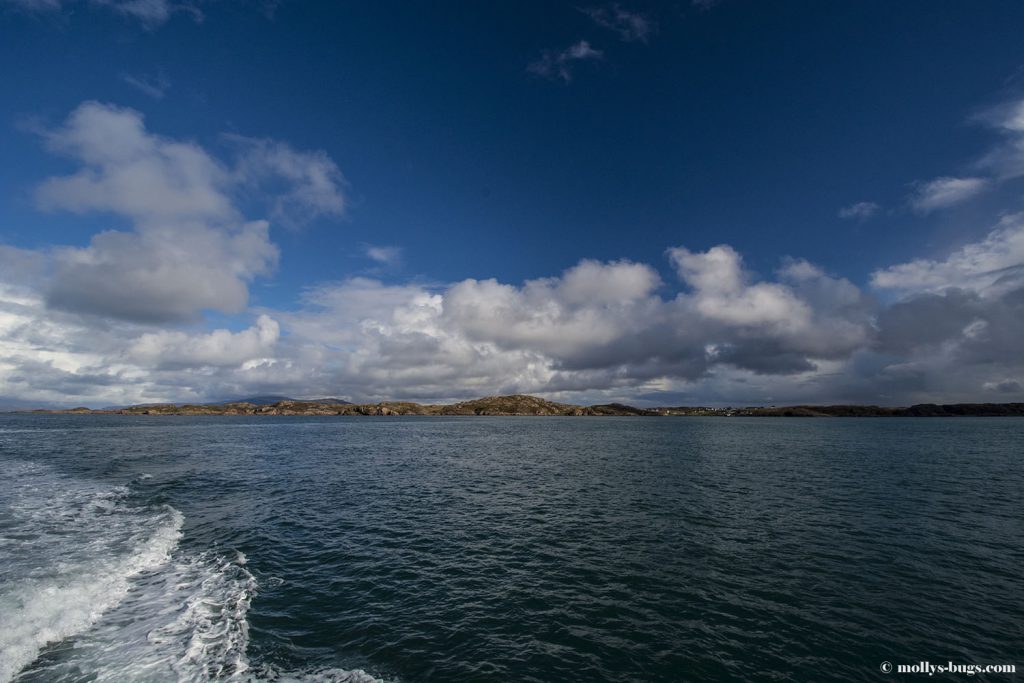
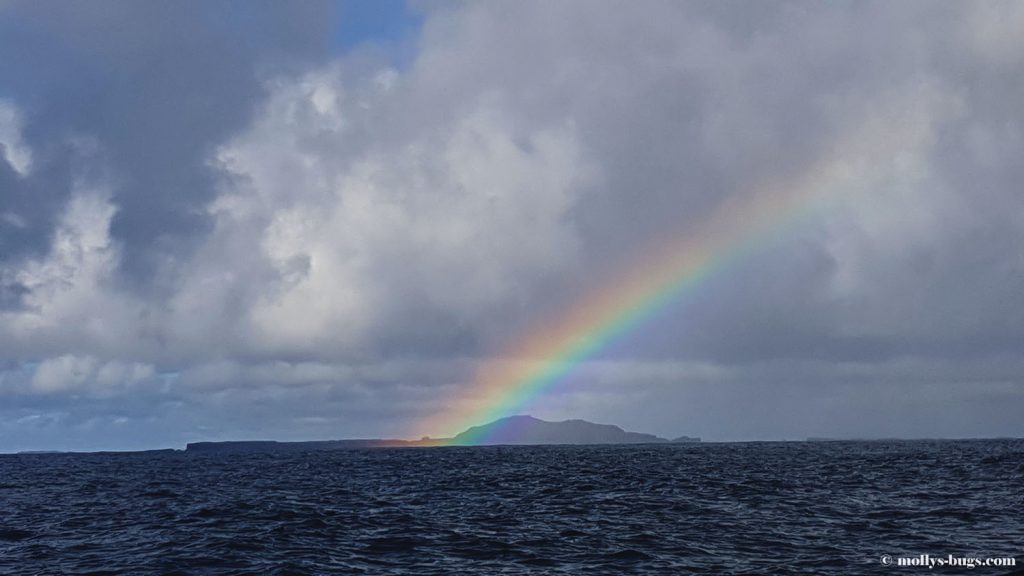
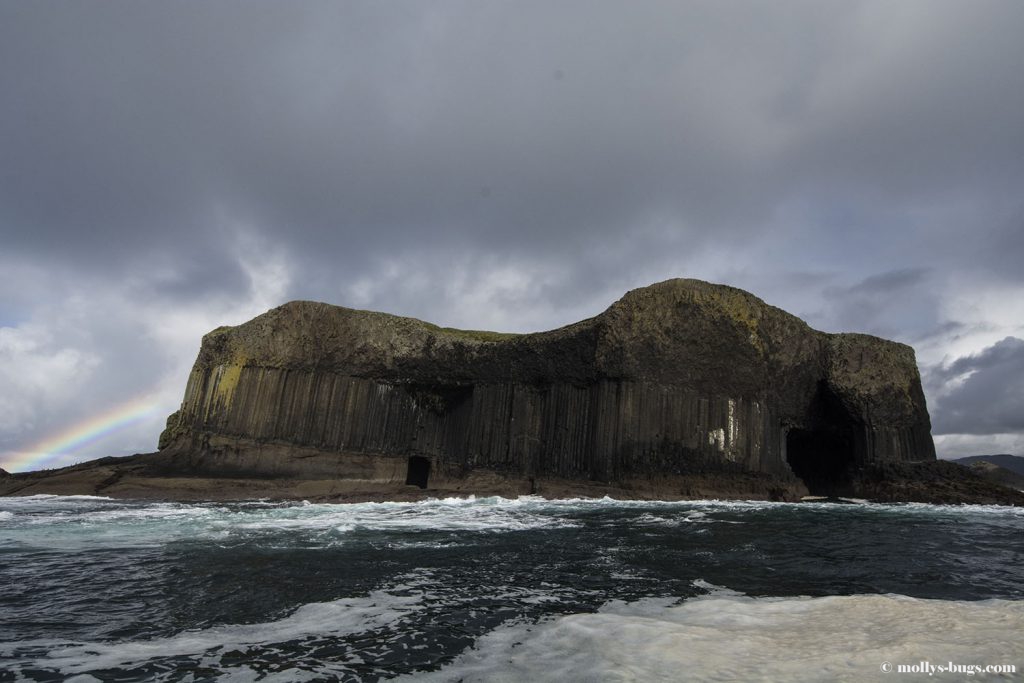
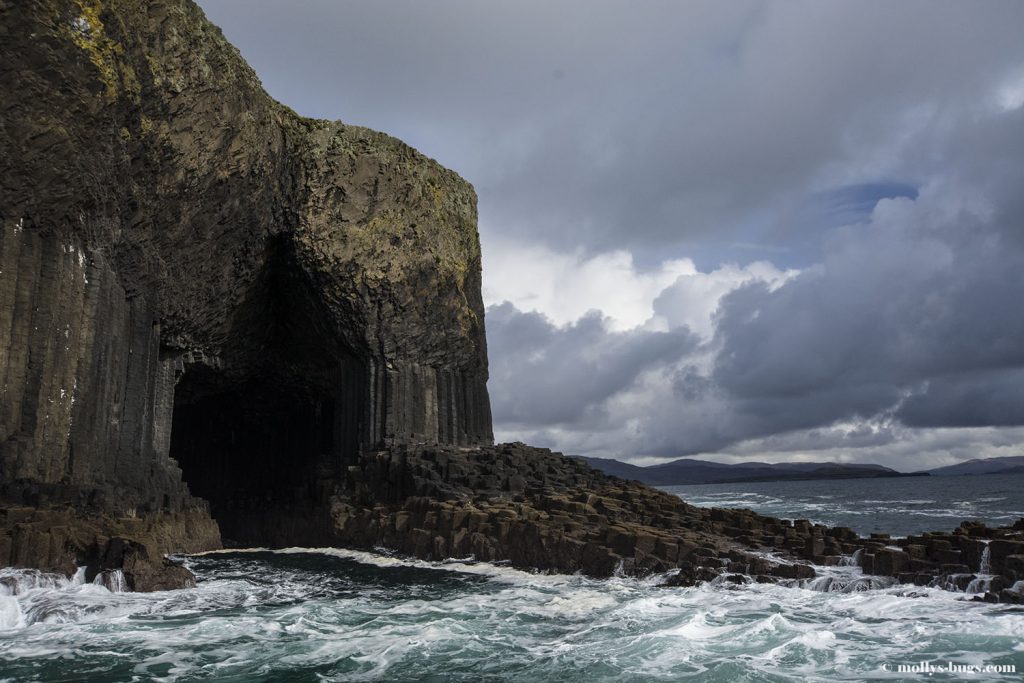
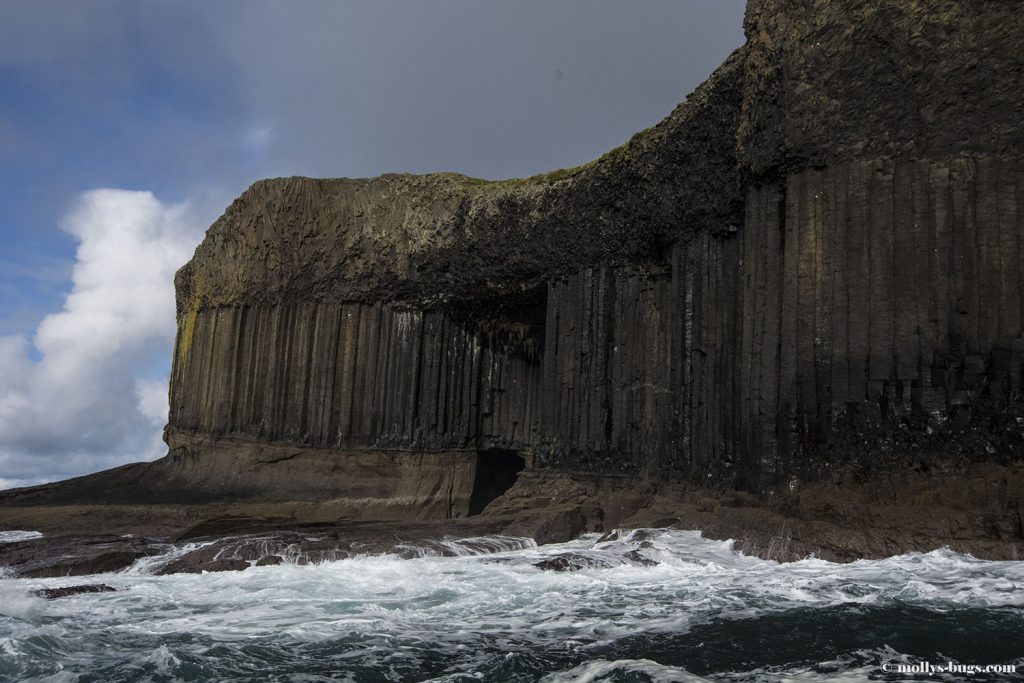
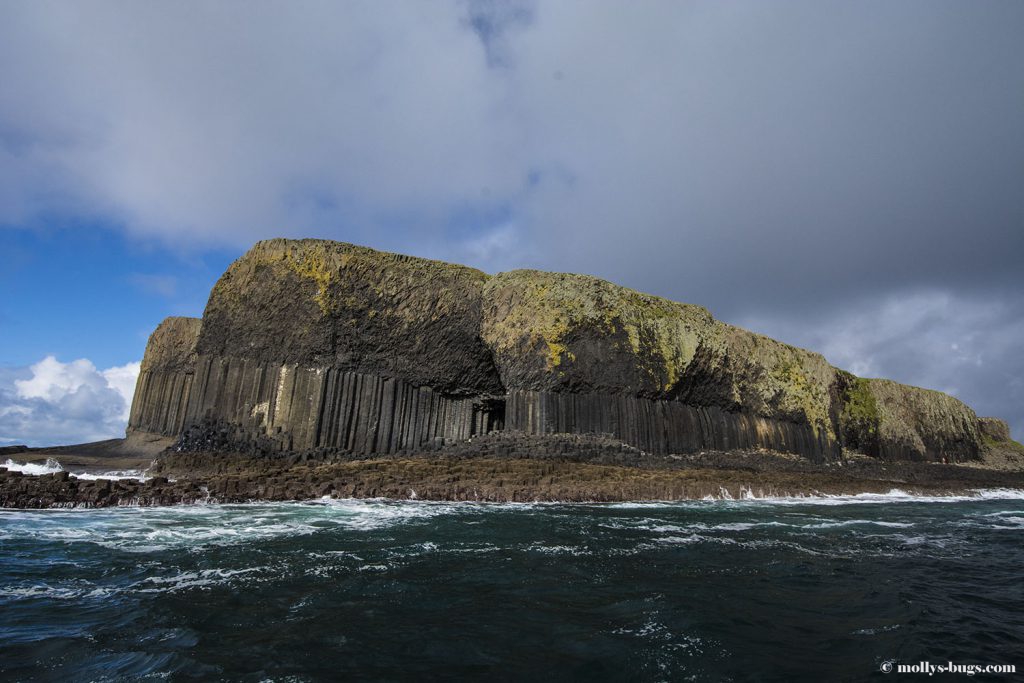
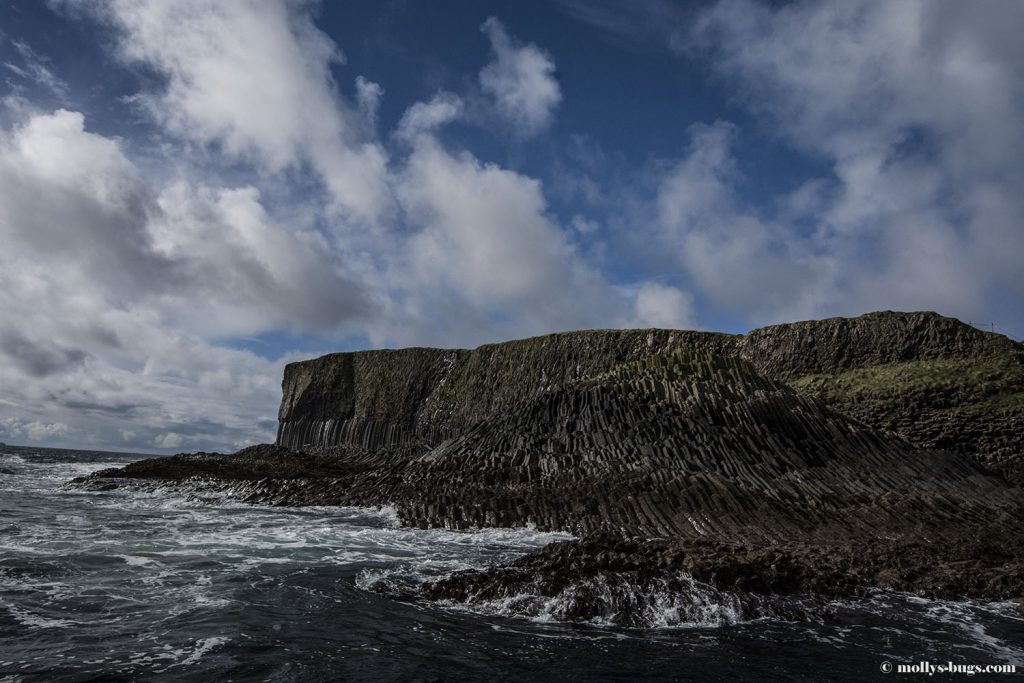
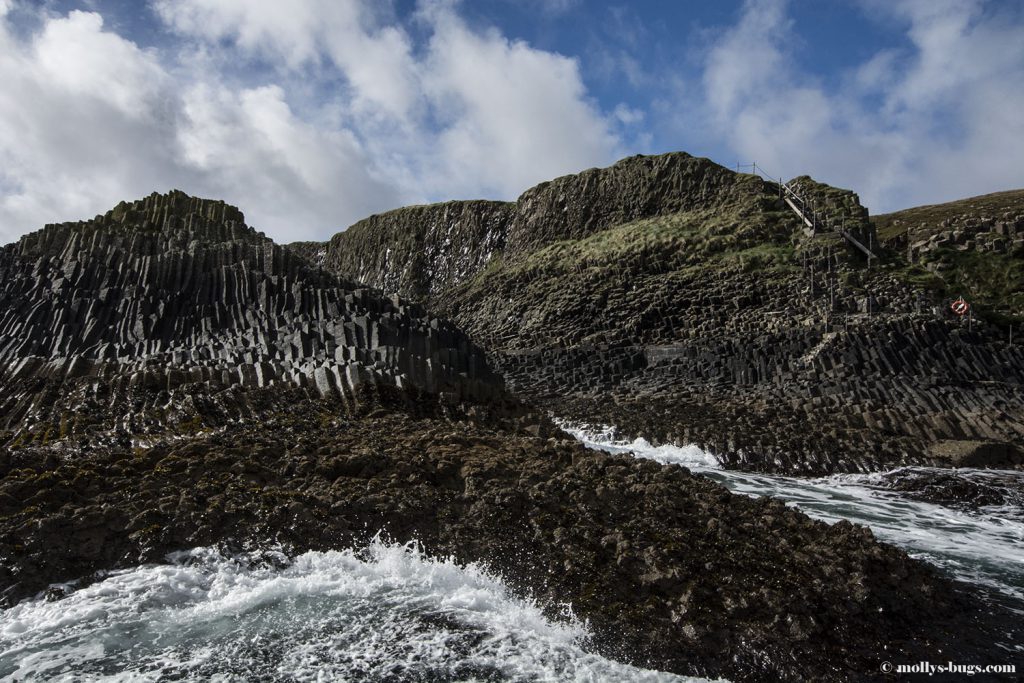
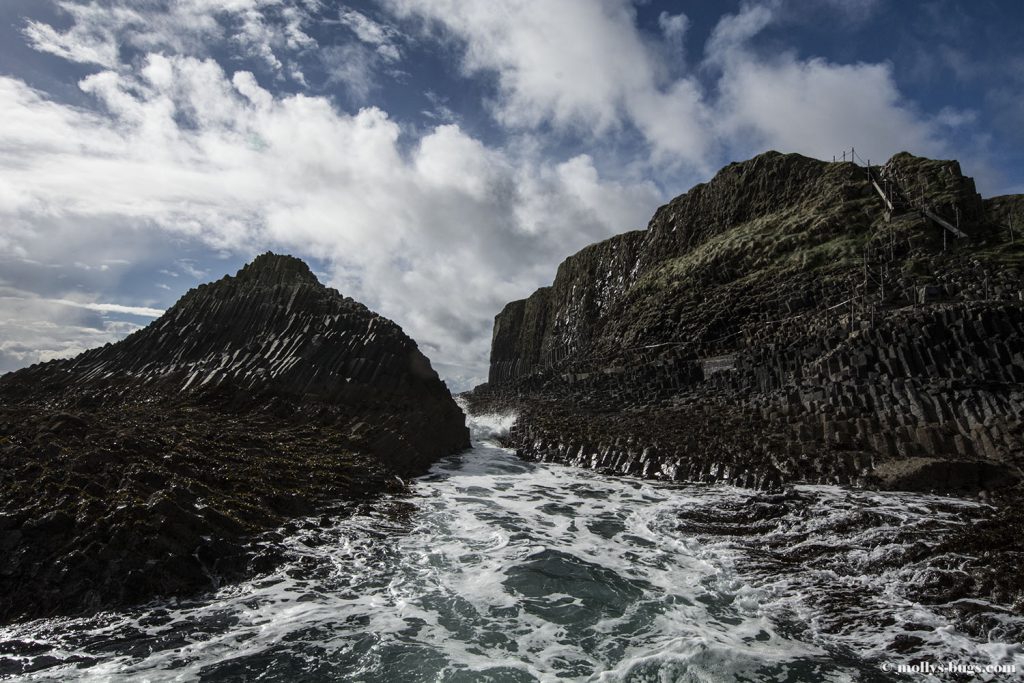
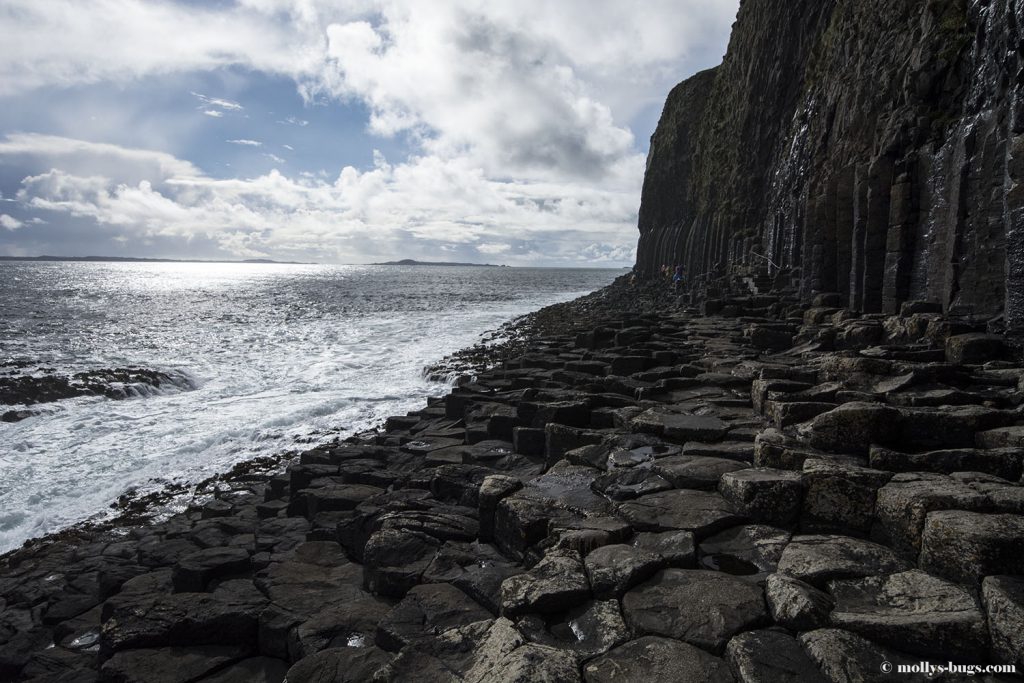
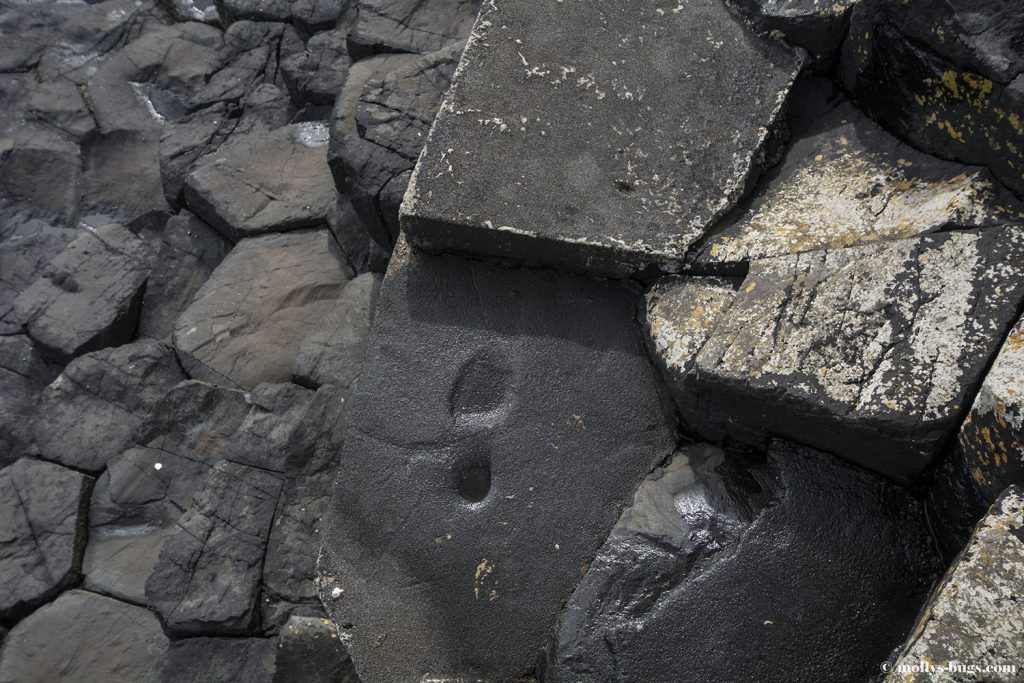
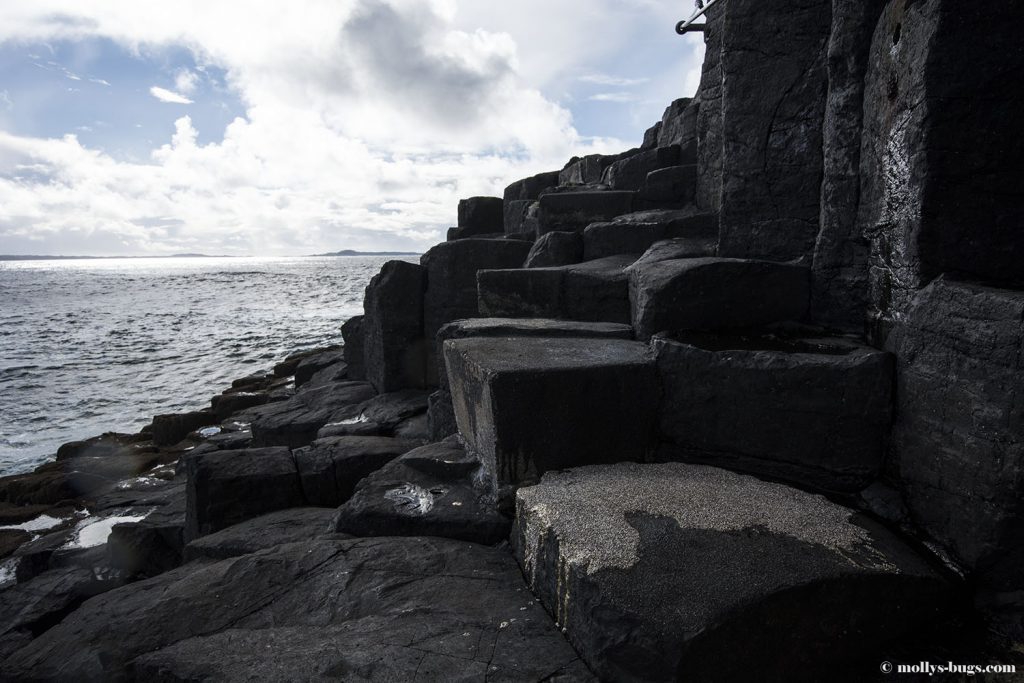
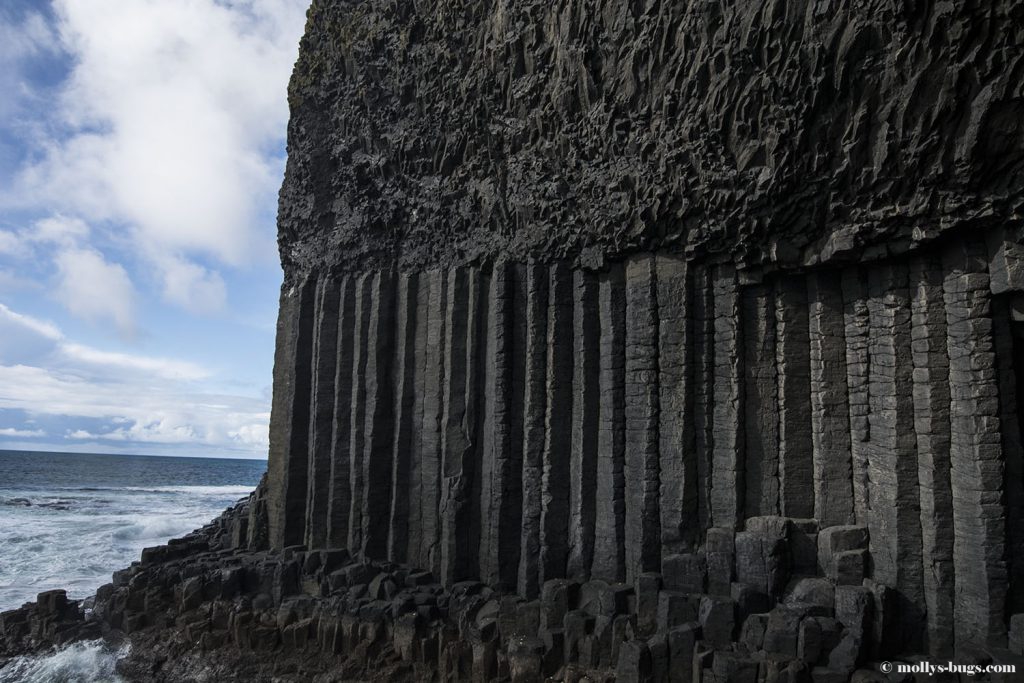
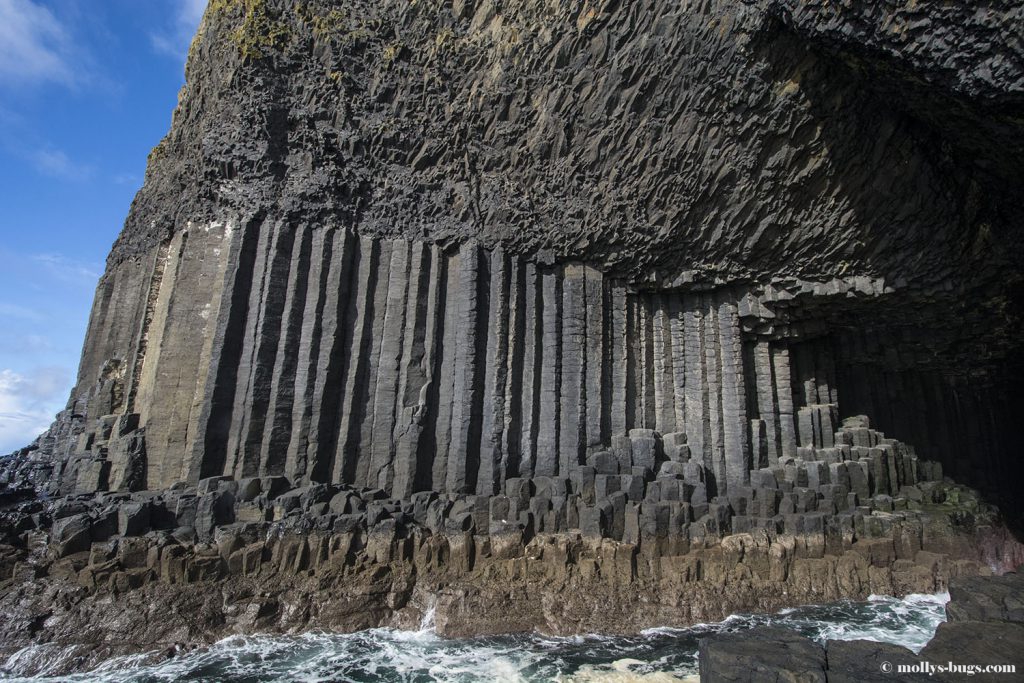
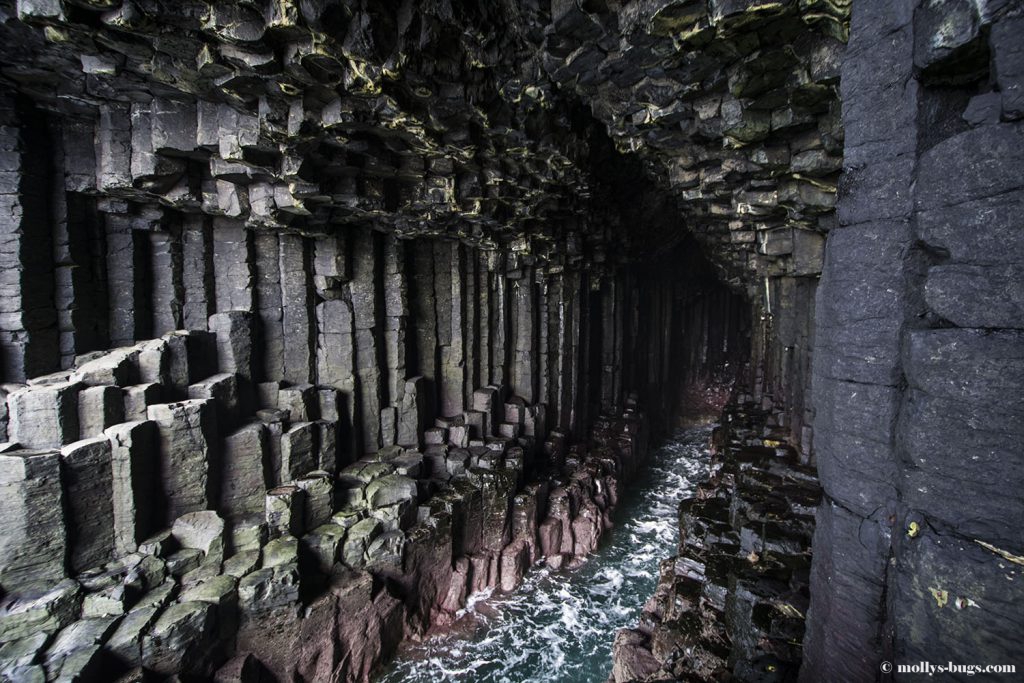
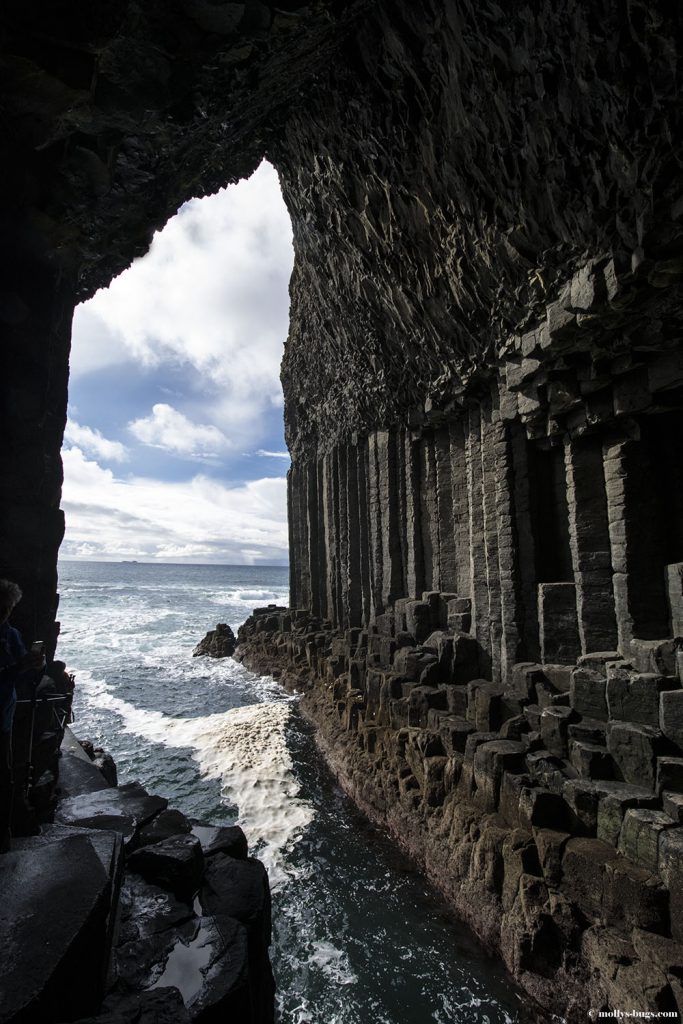
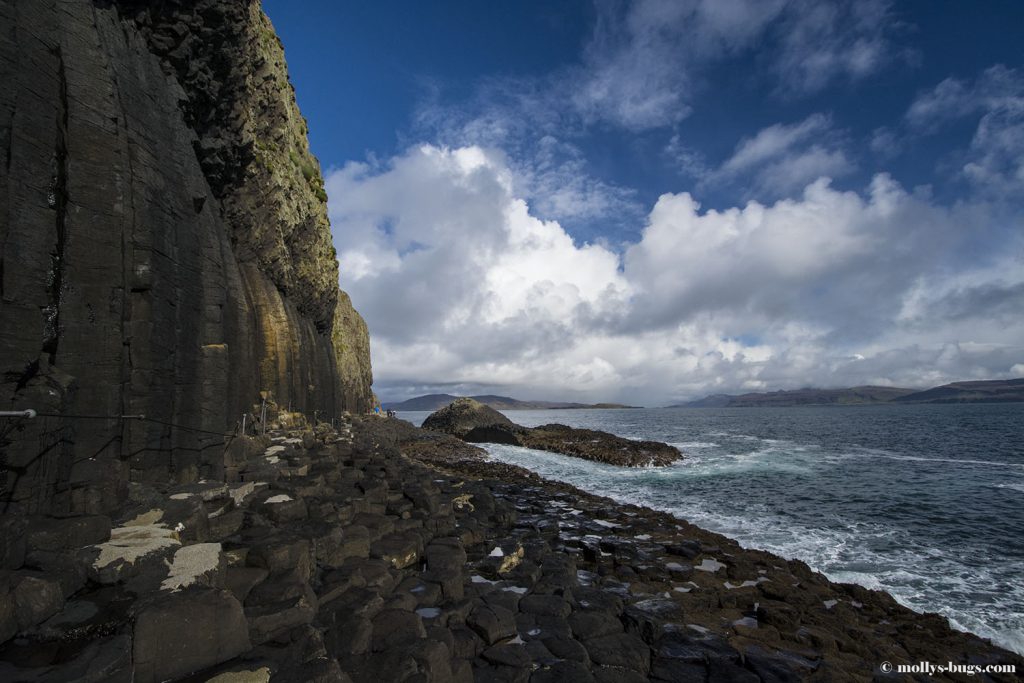
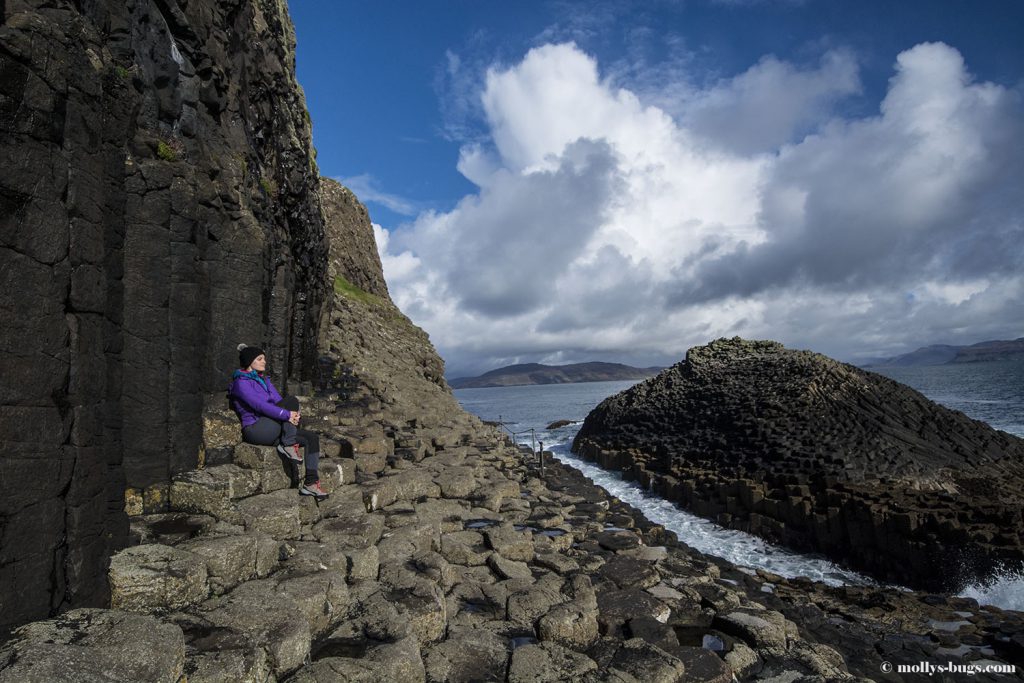
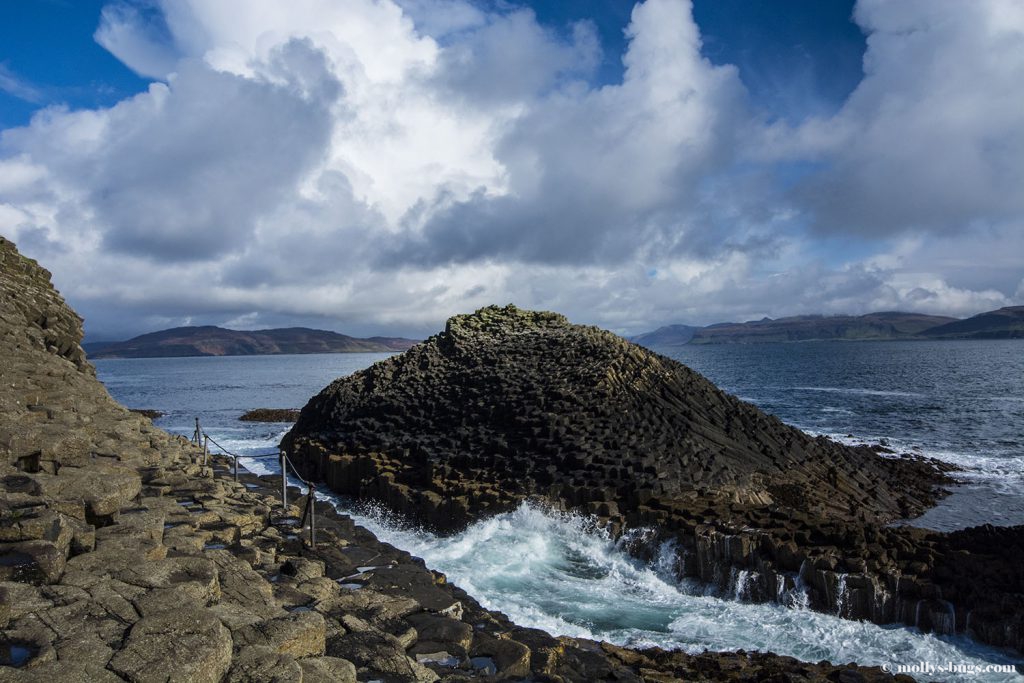
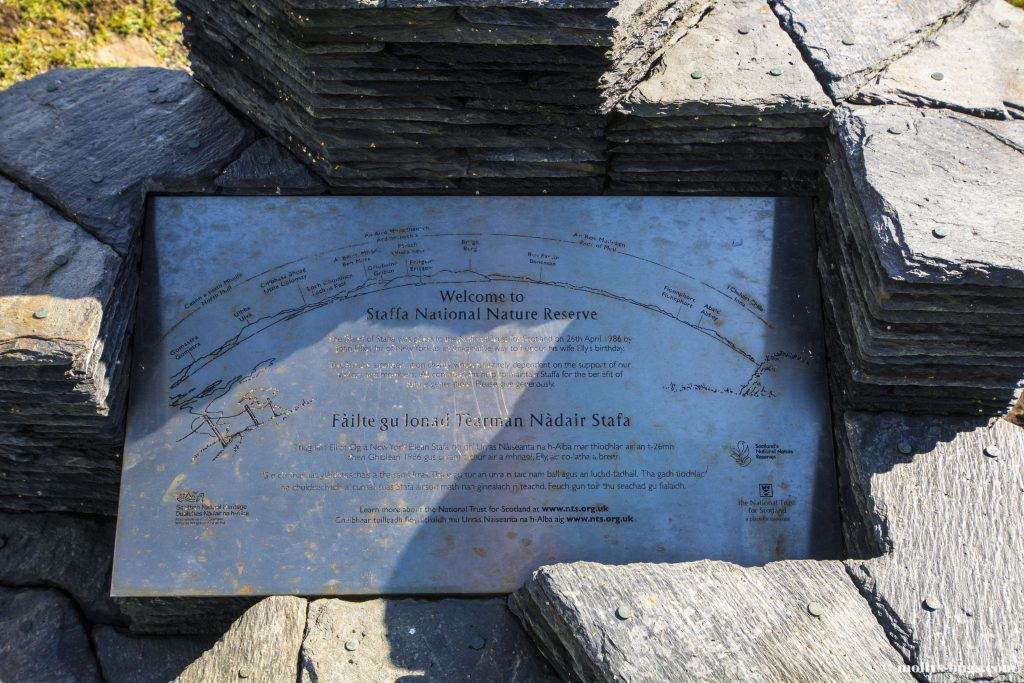
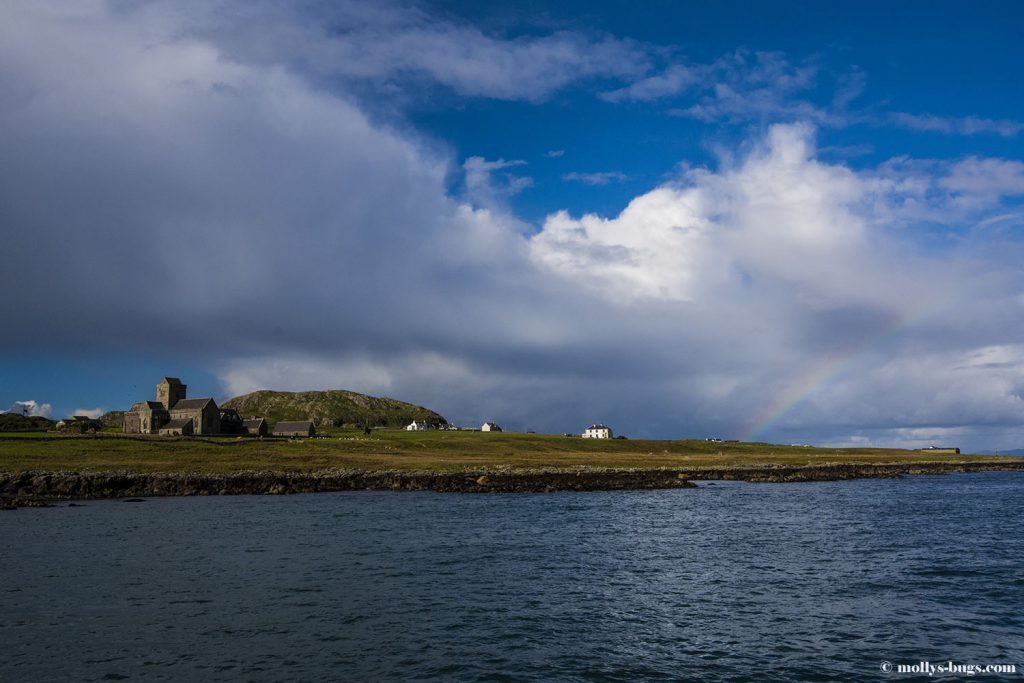
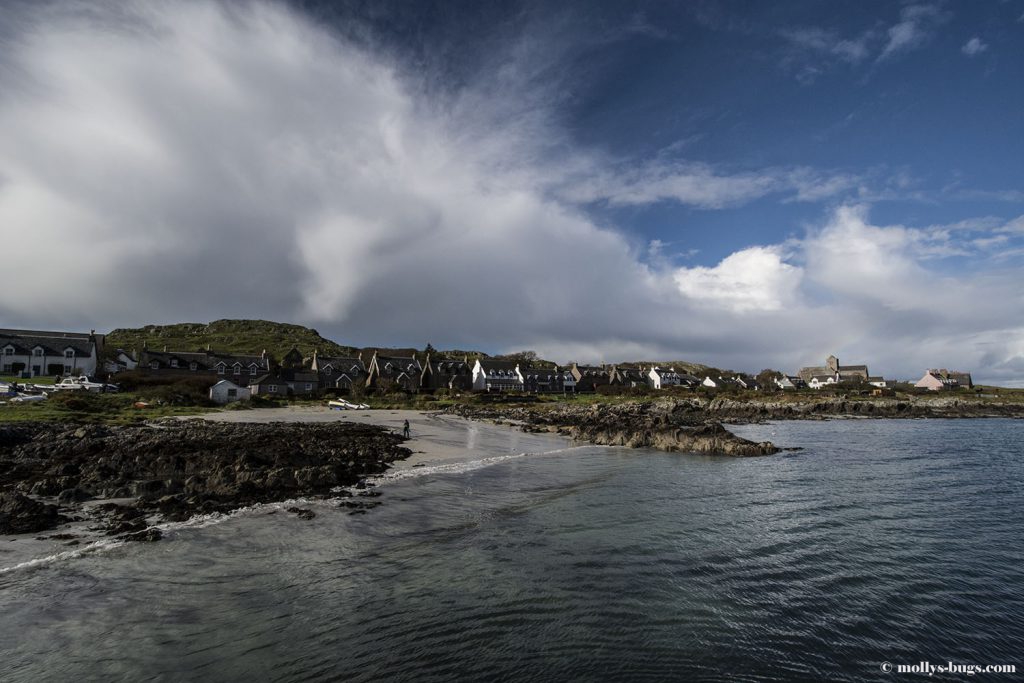
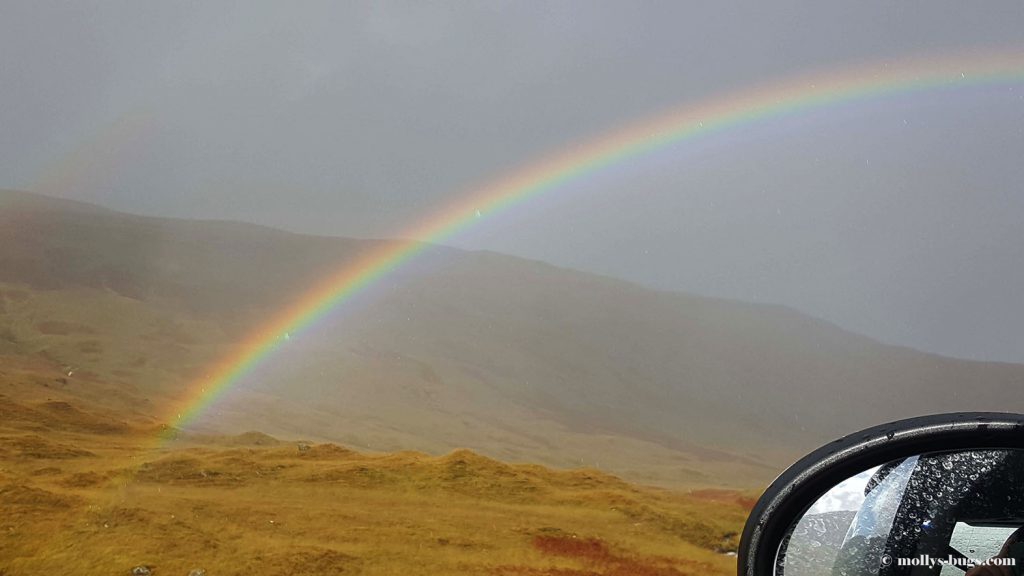
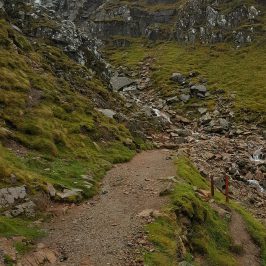

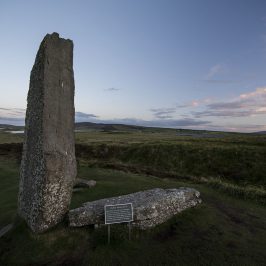
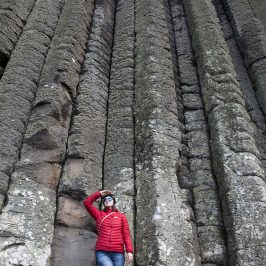
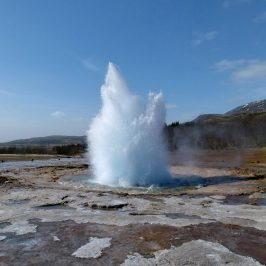

Lex Ritman
Dear Lady/Sir, A request. Please read: http://www.google.com and fill in: william h. mounsey wikipedia. Click and read about Staffa. See: Antiquarian, 8th line. Is it true what is mentioned. Especially the text: dulcissima solitudo. Thank you on forehand, Lex Ritman (archaeologist).
Mollysbugs
Hi Lex. Thank you for your interest to my blog. We haven’t seen his inscription on the stone on the Isle of Staffa. And our guide haven’t told us about him. So I even didn’t know about William before you write me